A guinea pig is so small. They are basically potatoes with little legs. So why, you may ask, do they need SO. MUCH. SPACE? Well, there are actually several important reasons why a large cage is imperative.
Your guinea pigs will be spending all of their time in their cage so rather than getting them an insufficient small wire cage from the pet store, why not give them a spacious, stylish, and comfortable habitat. After all, you want your guinea pigs to lead happy lives and no one is happy in a cramped space, least of all your guinea pigs.
When you go to a pet store, you usually see the guinea pigs all huddled in their little house. You may assume that is all that they do: hang out and hide. That is most definitely not the case.
Did you know guinea pigs get the zoomies just like dogs? They will randomly bolt across their cage popcorning this way and that, enjoying their little lives.
If your cage is too small then your guinea pig will not have the room that they need to exercise, which can lead to boredom and depression. All animals need enrichment, and guinea pigs are no different. They love to forage, burrow, and play. Part of having a pet is being able to watch it simply for entertainment.
A pig in a small cage is going to sleep all day and be depressed. A pig in a mansion will be roaming around and exploring, which is much more fun to watch!
Another benefit of a large cage is that the larger the cage, the less often you need to clean it. More space will help keep the smell at bay.
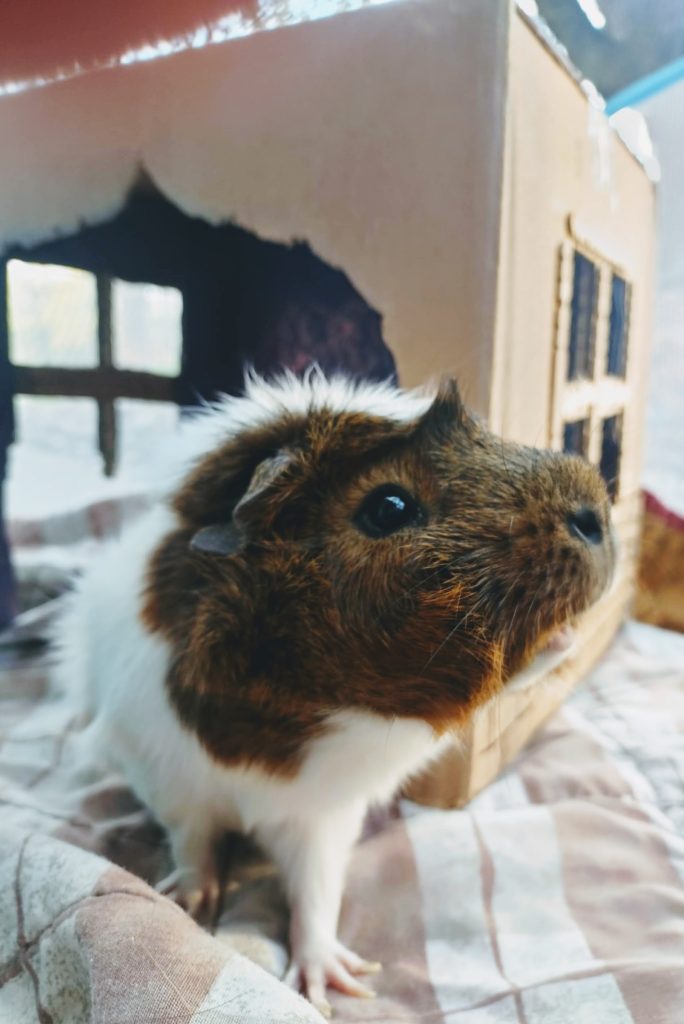
<a href=”https://shareasale.com/r.cfm?b=1928702&u=3049489&m=94813&urllink=&afftrack=”>Save with Bundles from Diamond CBD – Now Up to 60% Off! </a>
When shopping for guinea pig real estate, the most important factors to consider when thinking of what cage you want to buy is that there must be plenty of room and plenty of ventilation. Ventilation is important because guinea pigs have sensitive respiratory tracts and without proper ventilation can get respiratory illnesses.
With people, respiratory illnesses are not such a big deal but with guinea pigs they can easily become fatal, that is why making sure you have the proper cage and proper bedding is important.
As far as space, each adult guinea pig should have 7.5 square feet all to themselves and even more space for males is ideal.
One thing that is nice about guinea pigs, is that they are not the best climbers, so it is not necessary to have a lid or top to your cage unless you have other pets or small children that might disturb them.
Now onto the cages!
Guinea Habitat Guinea Pig Cage by Midwest
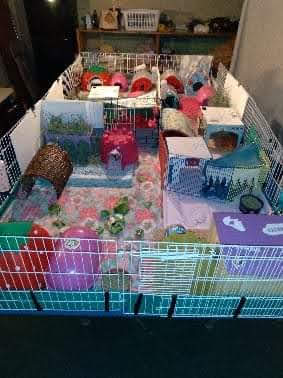
The first cage I would like to mention is the Guinea Habitat Guinea Pig Cage by Midwest. This is a great starter cage because it is easy to assemble and it can be customized to your needs. For instance, you can create it with or without a top.
The basic model of the Guinea Habitat claims to have 8 square feet, however I have heard that it is actually more like 7.5 square feet. So if you have a single pig, this would be the very minimum amount of space that is considered acceptable.
If you have a pair of guinea pigs, MidWest created their cages so that you can join them together either lengthwise or horizontally. MidWest makes it pretty easy for you to figure out how much room to have for your pigs because it is basically 1 cage per pig.
Midwest also makes a Deluxe version of the cage. The Deluxe version still claims to only have 8 square feet, but it also comes with a divider, ramp, and hay rack.
The Kaytee Open Pet Living Habitat looks very similar to the Midwest, but it is bigger, offering 12.5 square feet.
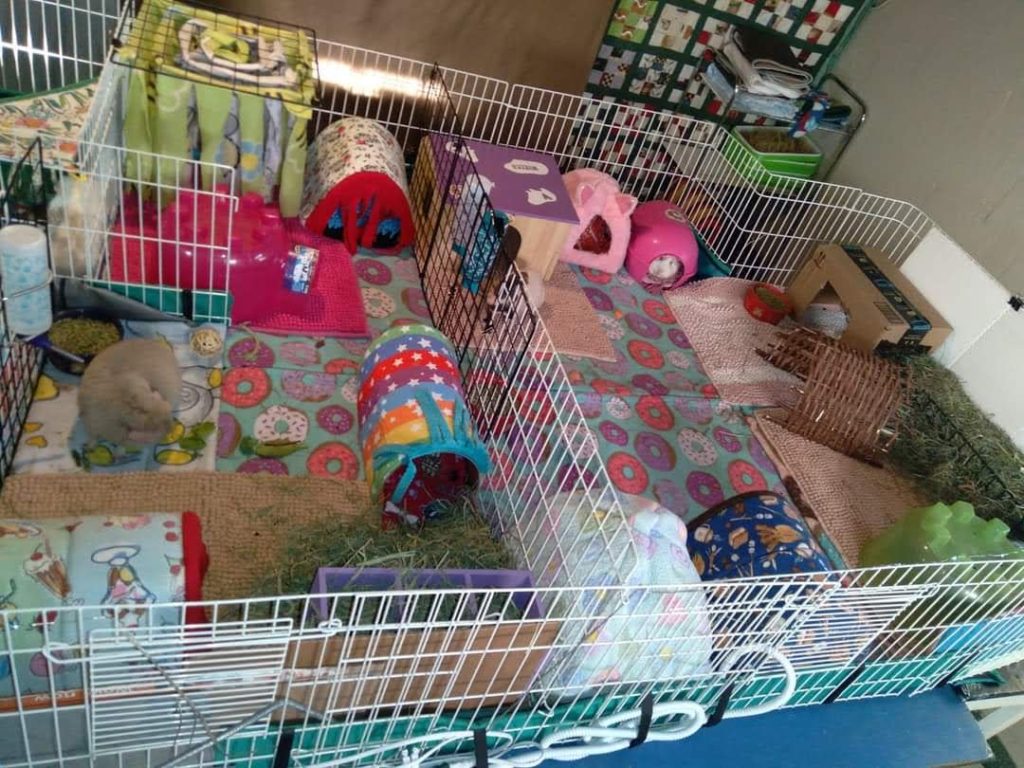
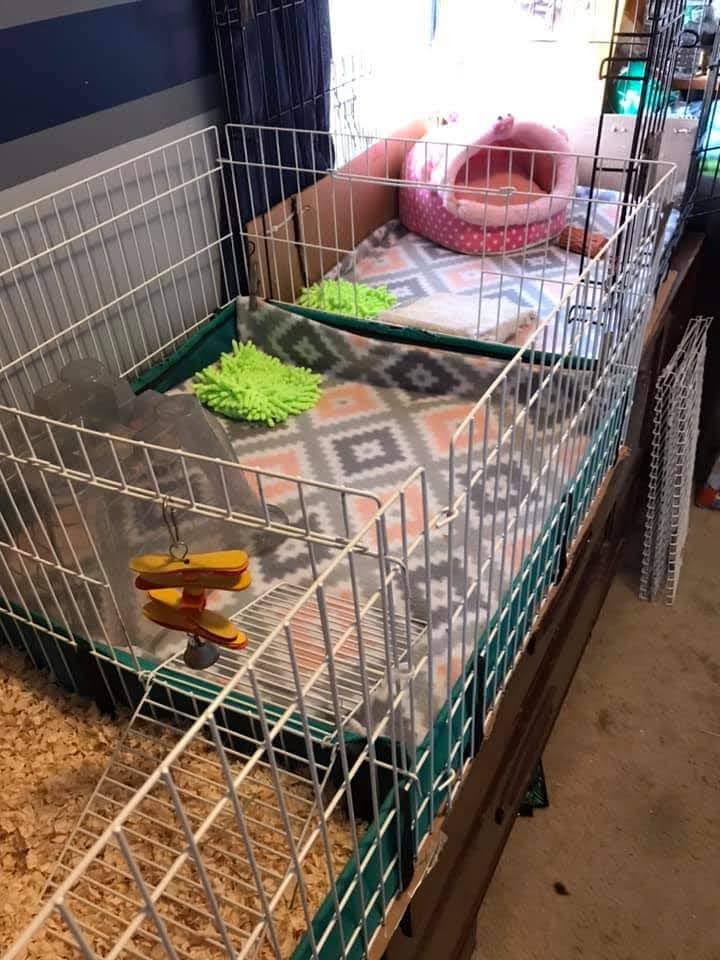
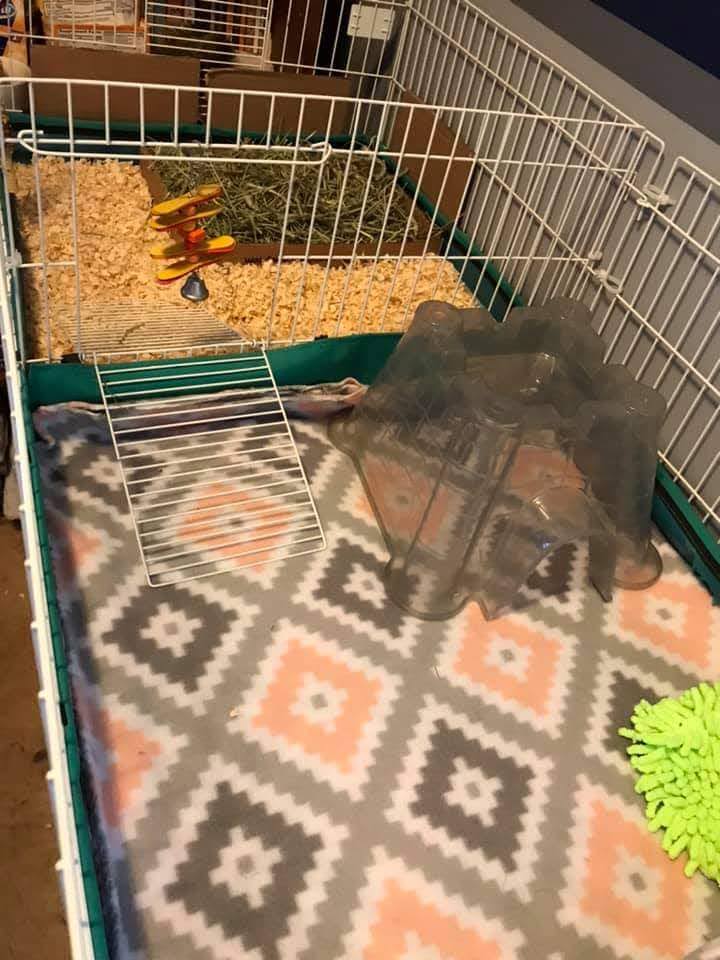
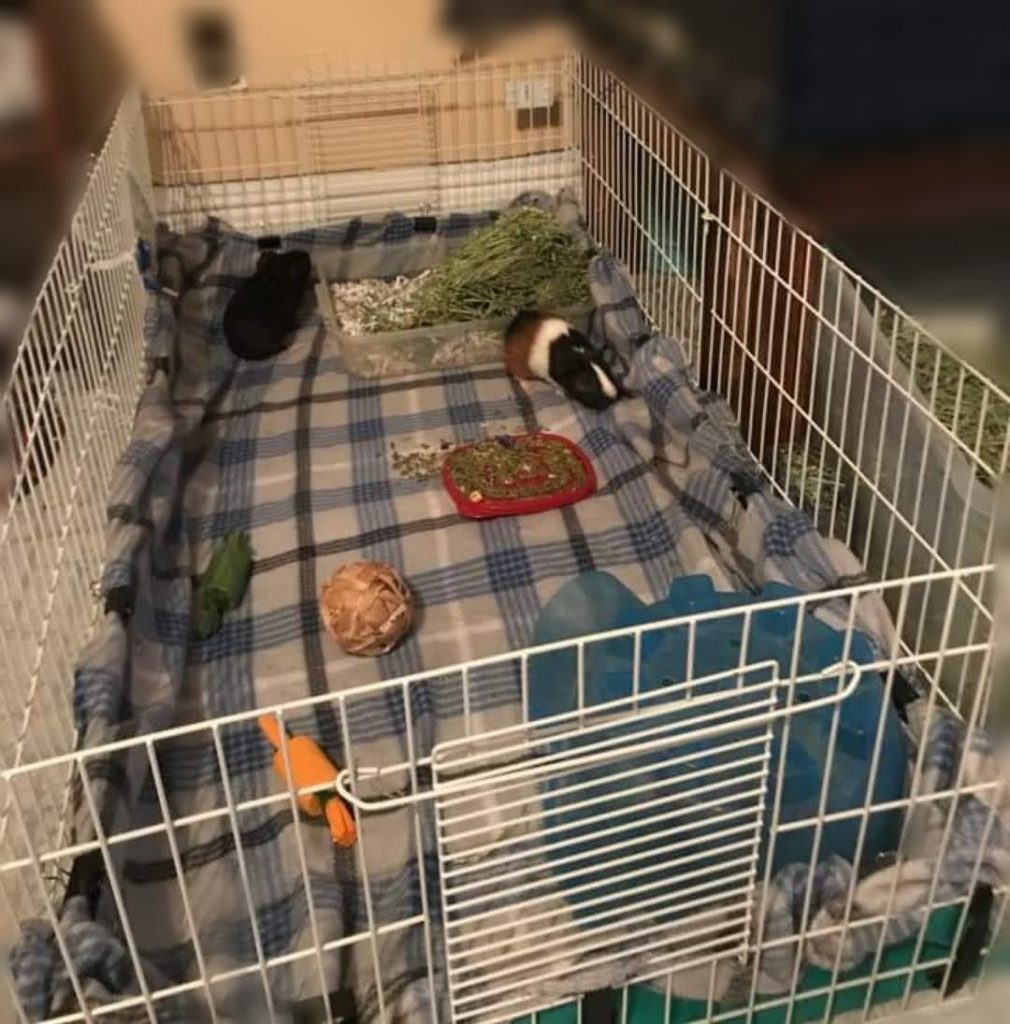
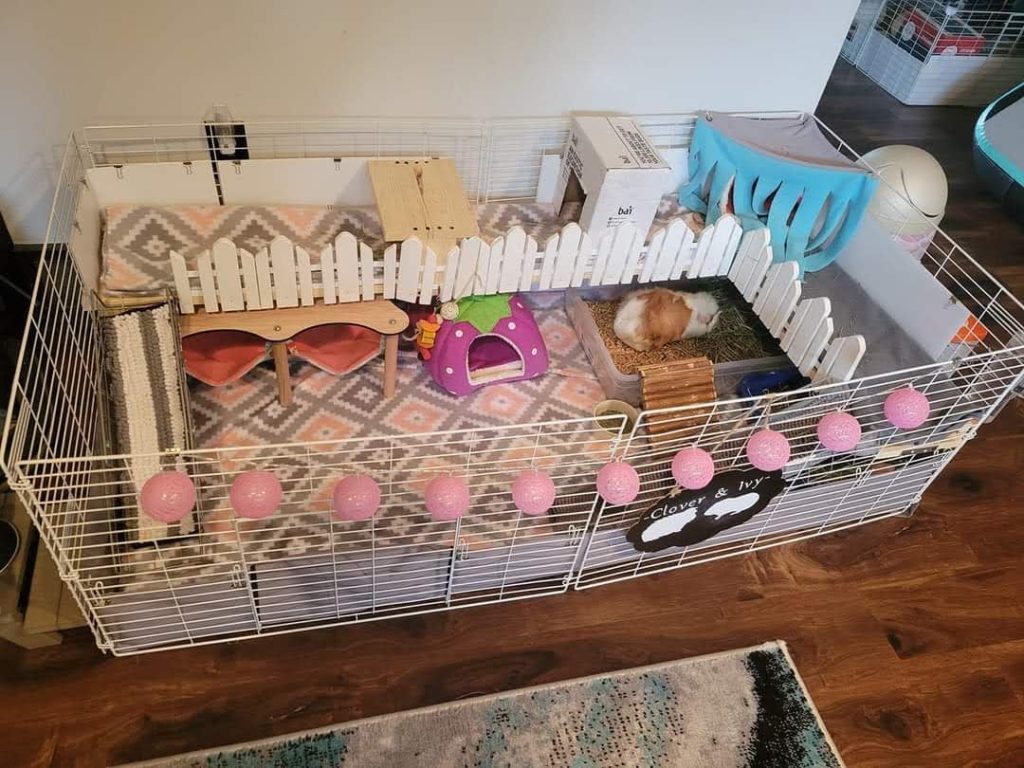
Cubes and Coroplast (C&C) cage
Another very popular cage choice is the Cubes and Coroplast (C&C) cage. C&C cages let you get more creative with your design ideas. It is easy to assemble, and it is completely customizable.
Some popular cage shapes that you can create with a C&C cage is a traditional rectangle, square, L shaped, or U shaped. Some people prefer one story while others like the look of a second or third story.
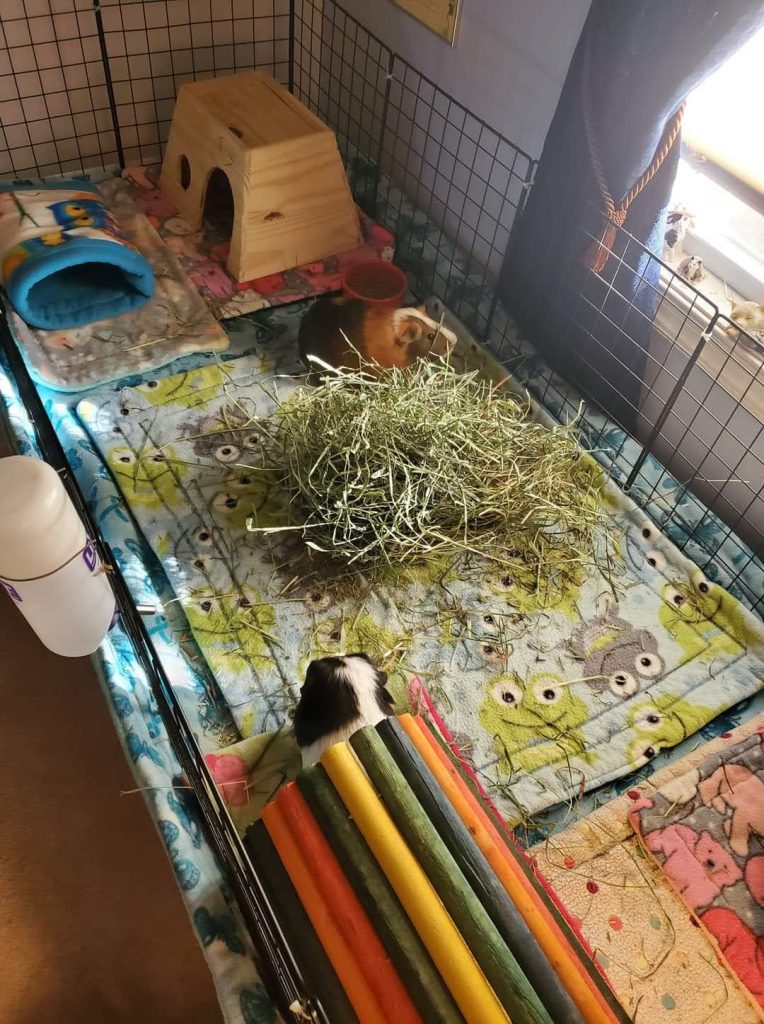
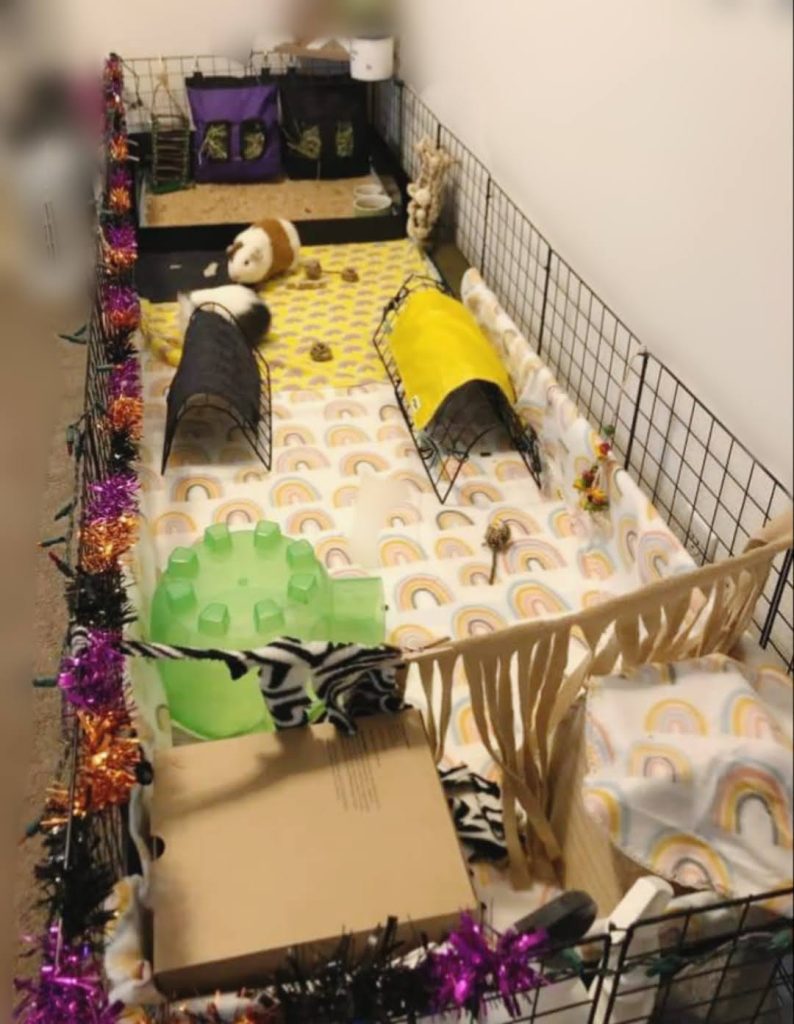
C&C cages are made out of storage grids and corrugated plastic. There are websites that sell C&C kits with everything that you need to build your cage along with extras like ramps, lofts, etc.
The grids are simply the popular storage cube grids that house the fabric storage bins used for school or home storage.
These grids can be purchased anywhere that sells storage materials.
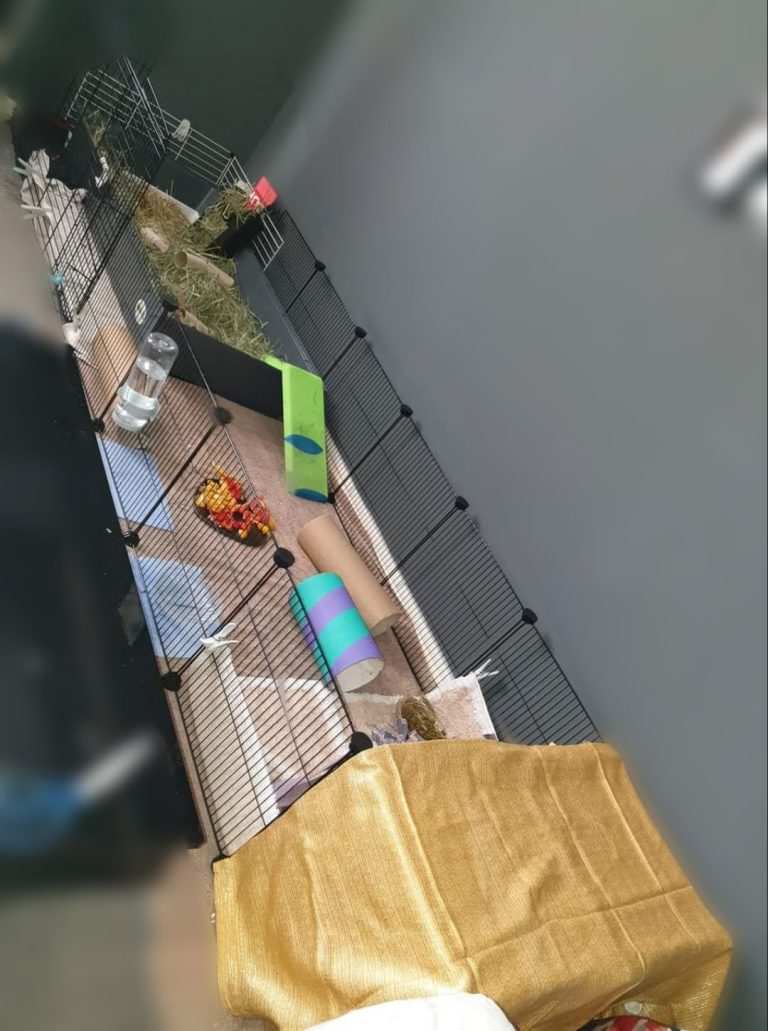
Hannah Daniel Morgan has this 2×8 C&C cage for her guinea pigs. As you can see, she has recycled the bottom of an old cage to be her “kitchen” and hold all the hay! If you are short on space, go long and slim like this cage! A long cage can be better for guinea pigs because they have a lot of room to run.
Some places that carry the grids are Walmart, Bed, Bath, and Beyond, Target, and Home Depot. You can also find them online on Amazon and Ebay and sometimes even get lucky finding them on recycled sites like OfferUp and Craigslist.
Coroplast aka corrugated plastic is a little harder to find. Home Depot has been the only store that I have found that sells a big enough sheet of it to use for a cage. You could also look at any local hardware stores and of course online as well.
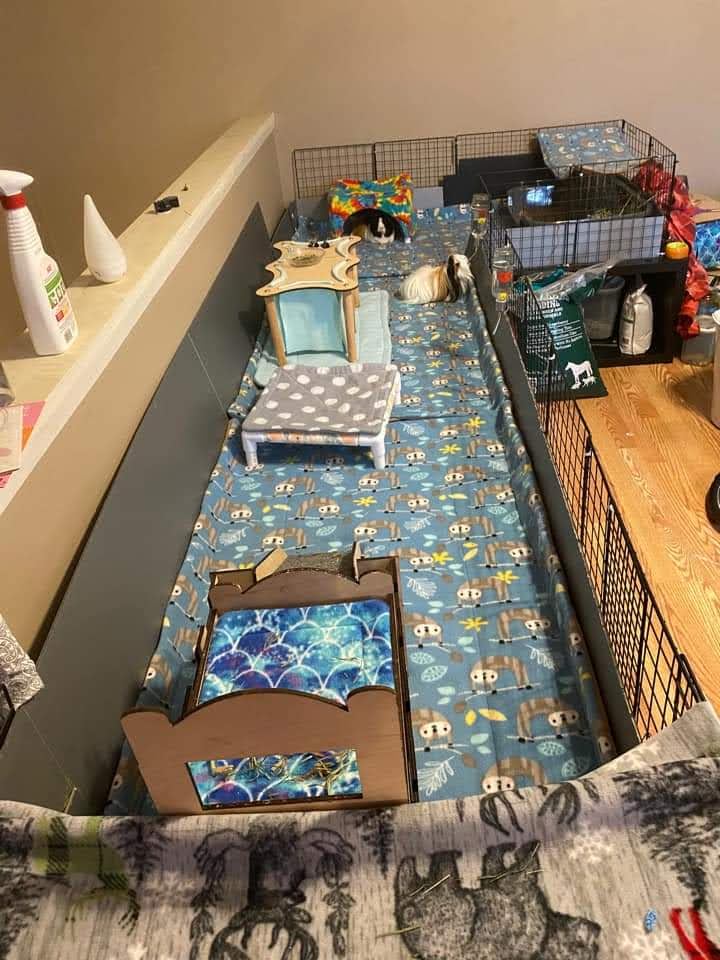
Coroplast is the only reason why I’m personally not crazy about the C&C cages. Rather than getting the C&C cage kit that I mentioned above, where they send you everything pre-scored and cut, I decided to go the budget route and buy the grids and coroplast separately.
The grids are easy to put together and I prefer to use zip ties for a tighter fit rather than using the grid connectors, but you can do it any way you like. The coroplast, on the other hand, was a little more difficult with all the measuring and cutting and scoring. In the end, though, C&C cages are a great option for guinea pigs.
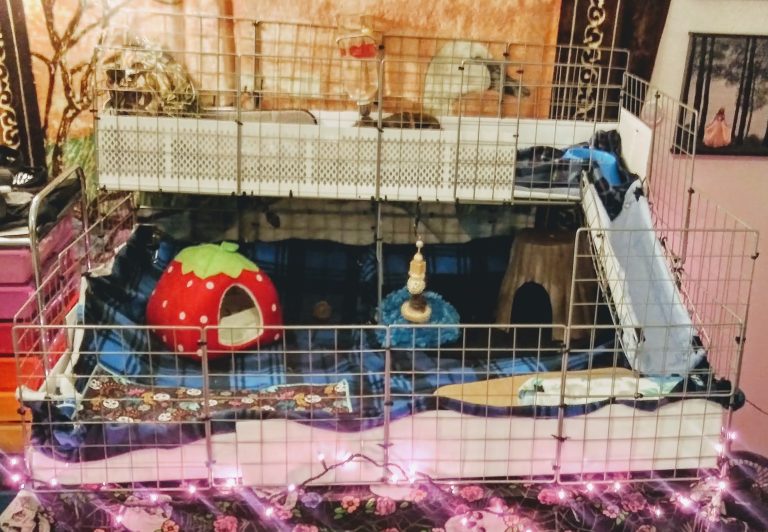
Oxbow Enriched Life Small Animal Cage with play yard
Oxbow also makes some cages that are of sufficient size. The Oxbow Enriched Life Small Animal Cage with play yard in the large and extra large size would be suitable for guinea pigs.
A lot of people look at the large cage with the guinea pig on the front of the box and think that the added play yard is an optional part of the cage that doesn’t need to be set up all the time, but if you look at the dimensions of the actual cage it isn’t quite large enough.
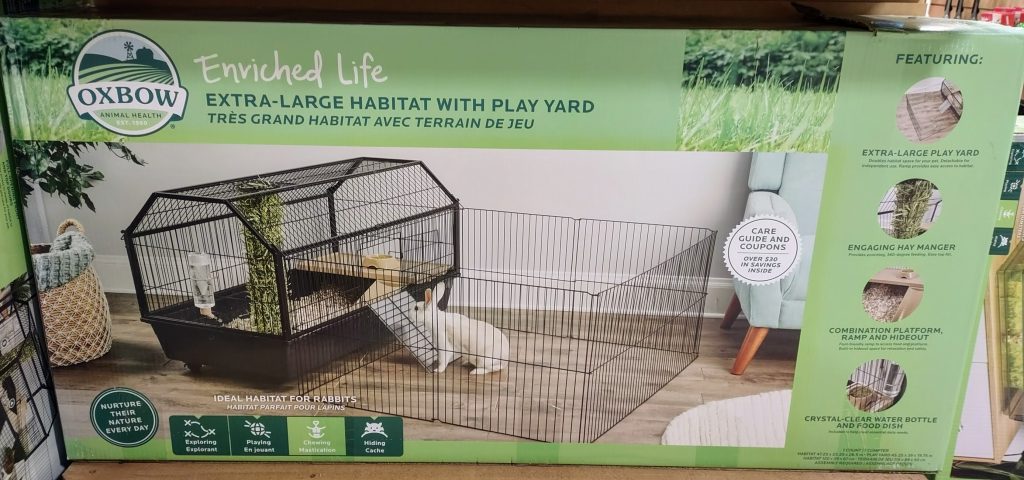
The large size is 7.5 x 40.5 x 18.75 so it would be plenty of space if you left the play yard always up and accessible to your pig.
The extra large is 9.1 x 48.8 x 24.2 inches, or 8 square inches, which is just big enough for one guinea pig alone, but if you keep the play yard up all the time it lends itself to being able to house 2 guinea pigs.
Essentially what you wind up with is a “kitchen” and a main living area. The “kitchen” becomes the actual cage where the guinea pig will eat and go to the bathroom, and the play yard becomes the “living room” where your pig can play, run around, and sleep. If you set up the cage and utilize all the space you will have a lovely home setup for your pigs.
If you are extremely lucky, you may be able to potty train your piggy to only potty in the kitchen, but more than likely you will need to put something down in their “living area”. The newer cages should come with a bottom that goes on the floor of the play yard.
These cages come with a ramp, a second level, a round hay rack that goes from top to bottom, a water bottle, and a plastic food bowl.
First, the ramp is way too slippery for a pig to climb, so if you wanted to use it you would have to modify it. Ramps with no sides or rails are not encouraged for guinea pigs for safety reasons.
The second level is not safe for guinea pigs because there is no rail or anything to keep your guinea pig from jumping or falling off. We use this cage at my work for the guinea pigs and I don’t even use the ramp. The second level is used more as a hide for them to go under, which works nicely because you don’t have to use up space to put a hide in the cage if you didn’t want to.
Overall, this is a suitable cage for a guinea pig as long as the play yard is attached and set up permanently with the cage. The cage is also on wheels making it portable which is a bonus.
The hay rack is a round cylinder that attaches to the top of the cage and extends down to the floor. Some might argue that the hay rack is not safe for guinea pigs because the square holes are big enough for a guinea pig to get their head stuck. This is definitely true for baby guinea pigs but larger adults should be ok.
I, personally, am not a fan of the hay rack. Because of its placement in the center of the cage, it makes it a little difficult to clean around it.
All Living Things Guinea Pig Home and Play Pen Habitat is similar to the Oxbow cage but it is smaller. It is 10 square feet with the cage and play yard attached.
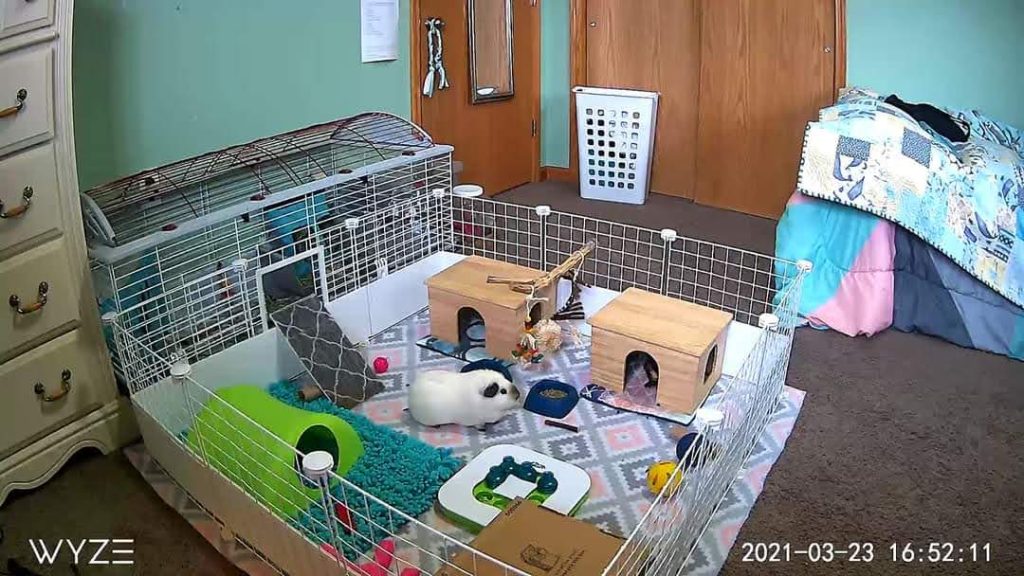
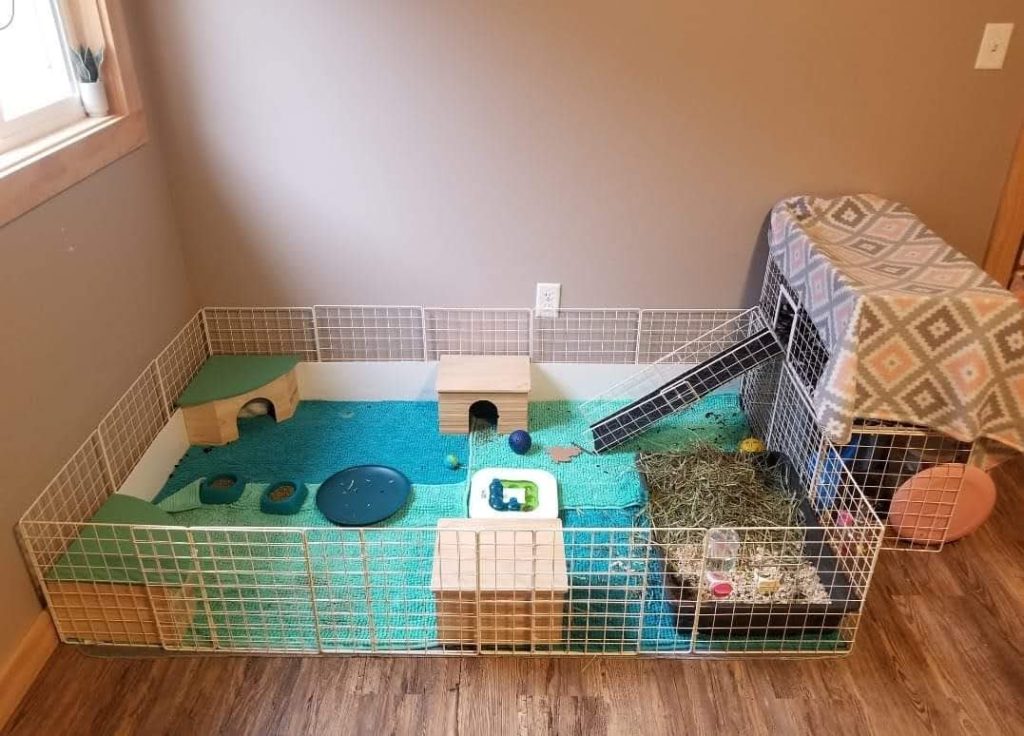
diy cages
Lastly, I would like to mention all the diy cages made out of various random materials. I’ve seen people use recycled doors, changing tables, cribs, old dressers, bookcases, and old chicken coops. The sky’s the limit.
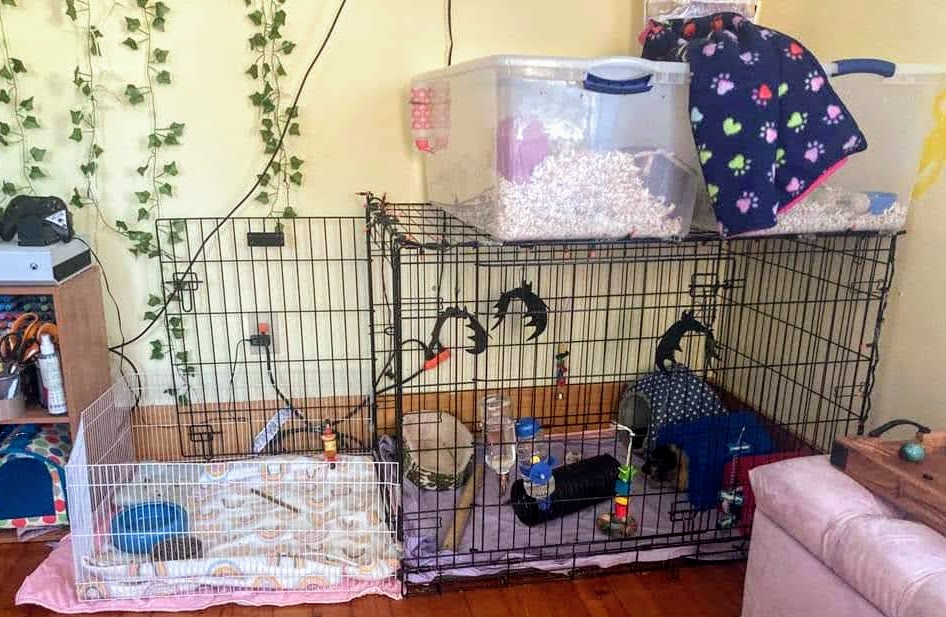
The only requirements that pigs have is that the floor should be waterproof and the sides must be high enough for them not to get over, and as mentioned above, if there are other animals or small children in the home then a lid would be good.
My DIY wood cage
My cage for my 2 boars (male guinea pigs) is made out of wood. My husband and I wanted to make something big enough but I didn’t want to spend a lot of money because I have a tendency to always be changing or expanding on my cage.
This cage is a 6×3 with 18 square feet overall.
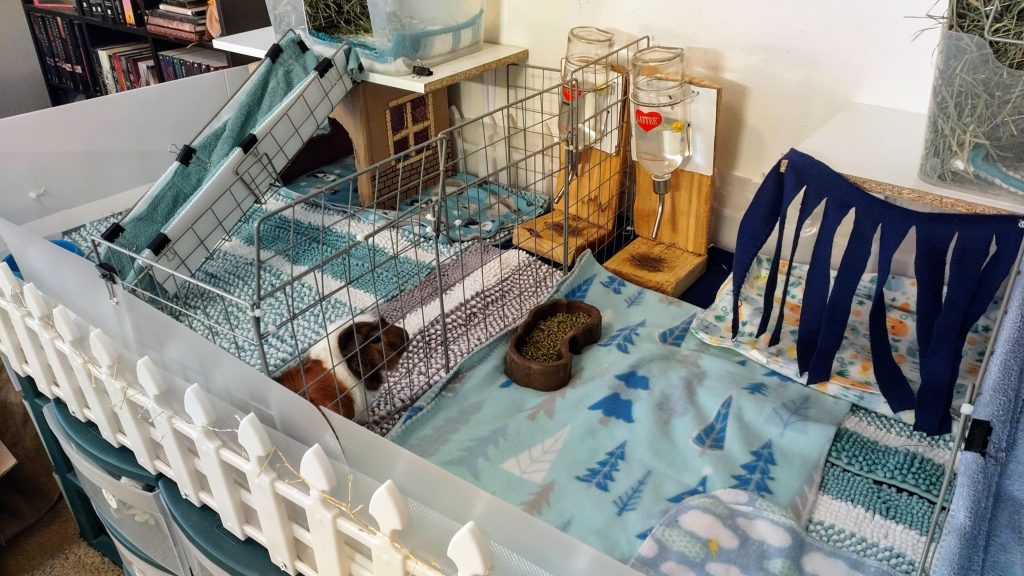

We used fence boards for the bottom that my hubby nailed together. Then we got sticky tiles that we covered the bottom with, which I love because it is very easy to just quickly wipe down during every cage cleaning. We used plastic picket fencing for the sides and clear plastic shelf liner on the inside of that to cover the spaces. The plastic shelf liner wasn’t tall enough for my pigs though so I bought some clear plastic cutting boards, which surprisingly worked perfectly, to go on the inside of the sides.
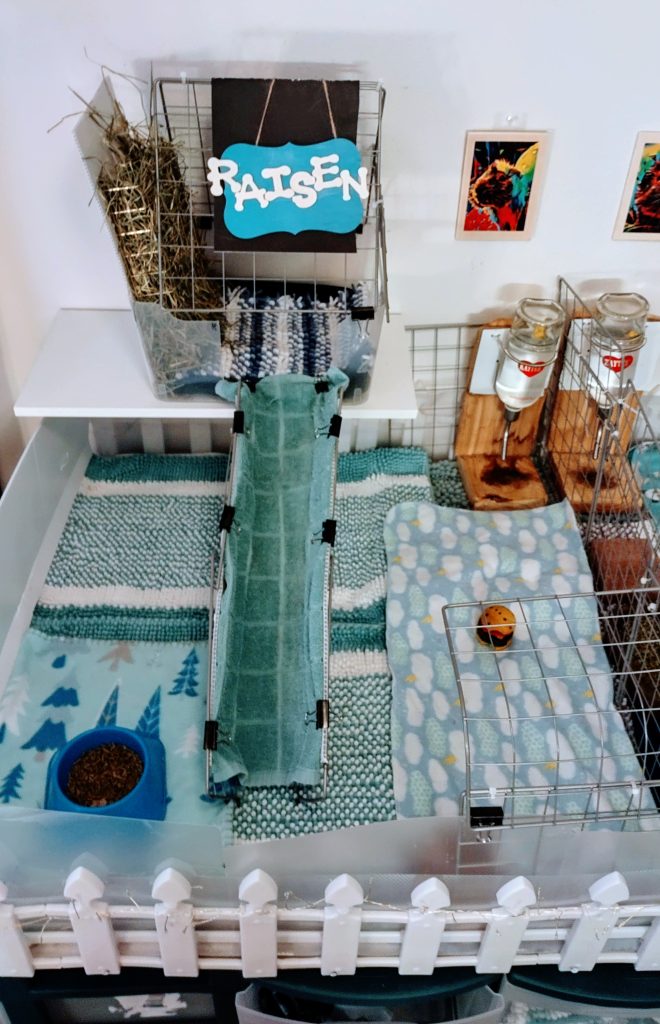
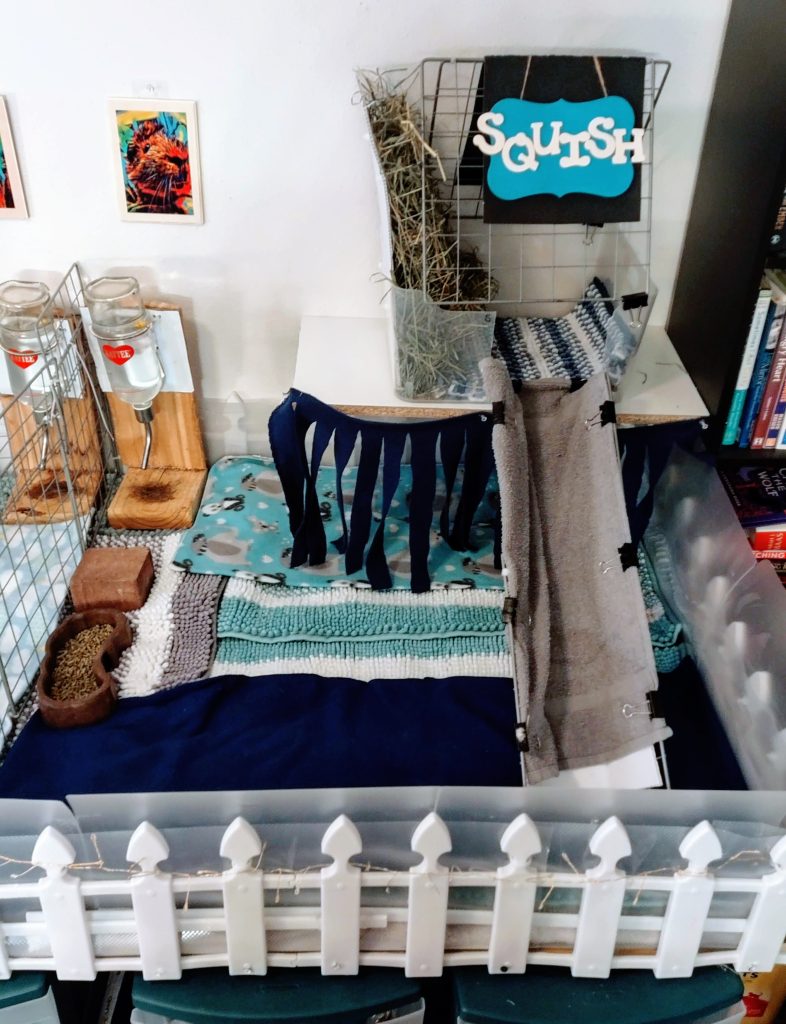
Unfortunately, my two guinea pigs, Squish and Raisen, have to be separated because they do not get along anymore. But they do love to room right next to each other! So, sadly, the cage has to be divided and each pig lives in a 3×3 with 9 square feet per piggy.
I have tried several different ways to give hay, and these little hay loft houses are the tidiest way I have found. They do still track some hay down their ramp and into the rest of the cage but it isn’t as messy as other ways I have tried.
Conclusion
As you have just read, there are several different cage options you have to choose from. Whether it’s getting a convenient c&c cage kit or building a one of a kind diy cage, you have the opportunity to give your guinea pig a life of luxury!
Next, you may be wondering what you should put IN your cage. There is actually quite a wide variety of bedding materials you can use. Some are more cost effective than others. I have a whole blog post on the wide varieties of guinea pig bedding available to you!
What kind of cage do YOU have? What works best for you and your piggies?
Let me know in the comments below!
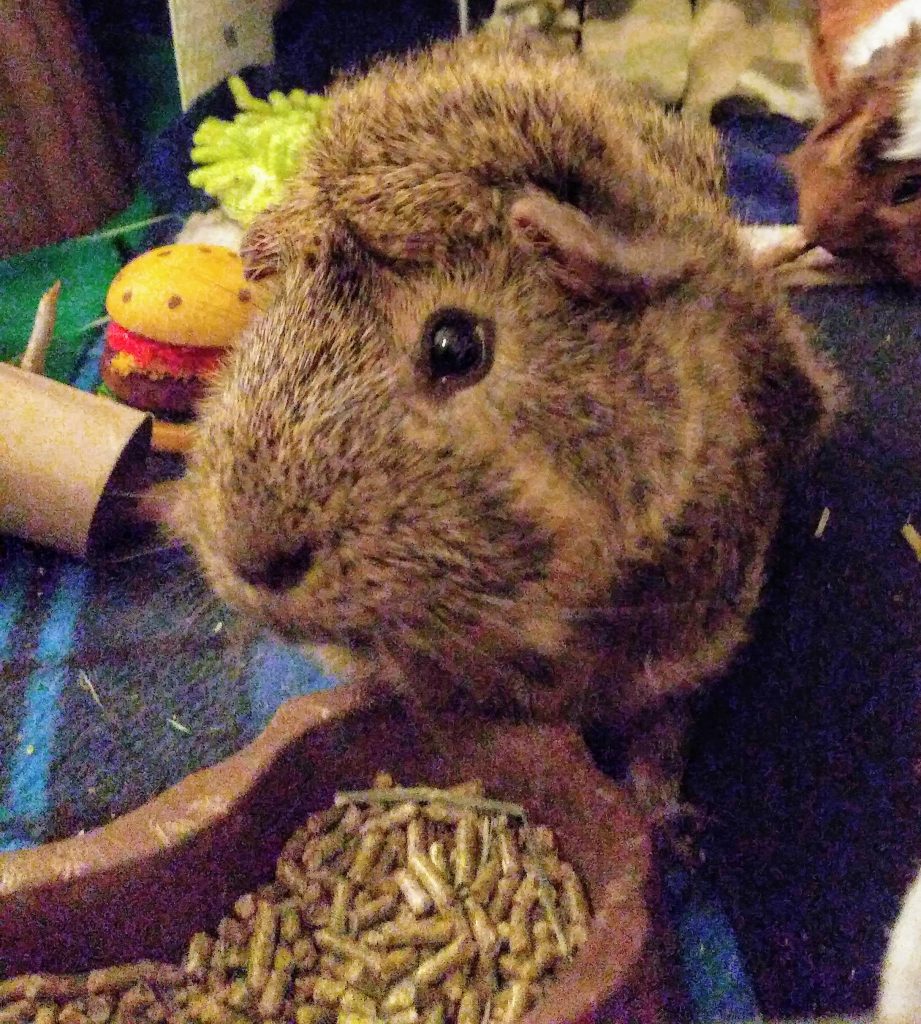

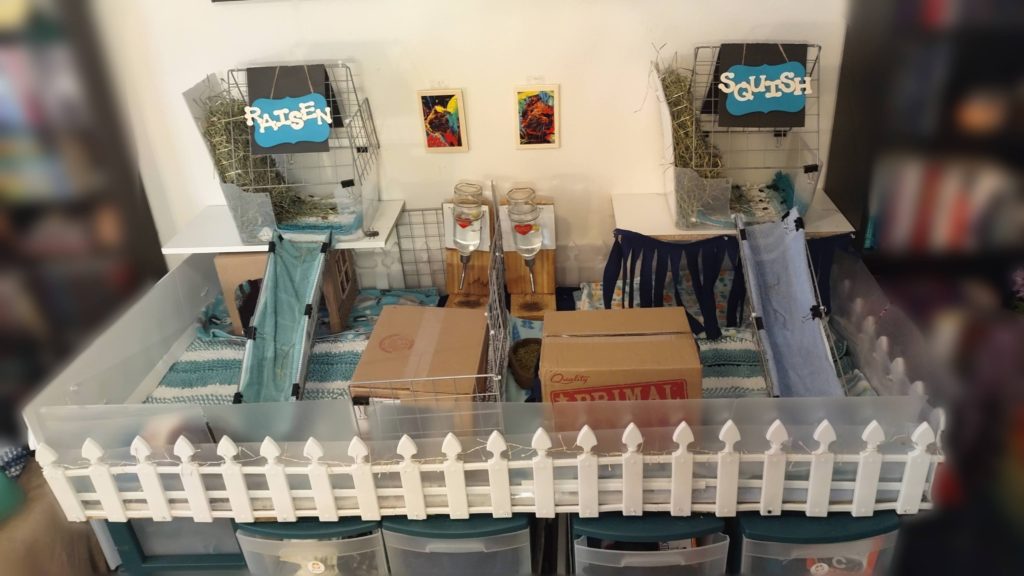
awesome blog!!!! very informative !!!!! learned alot thank you!